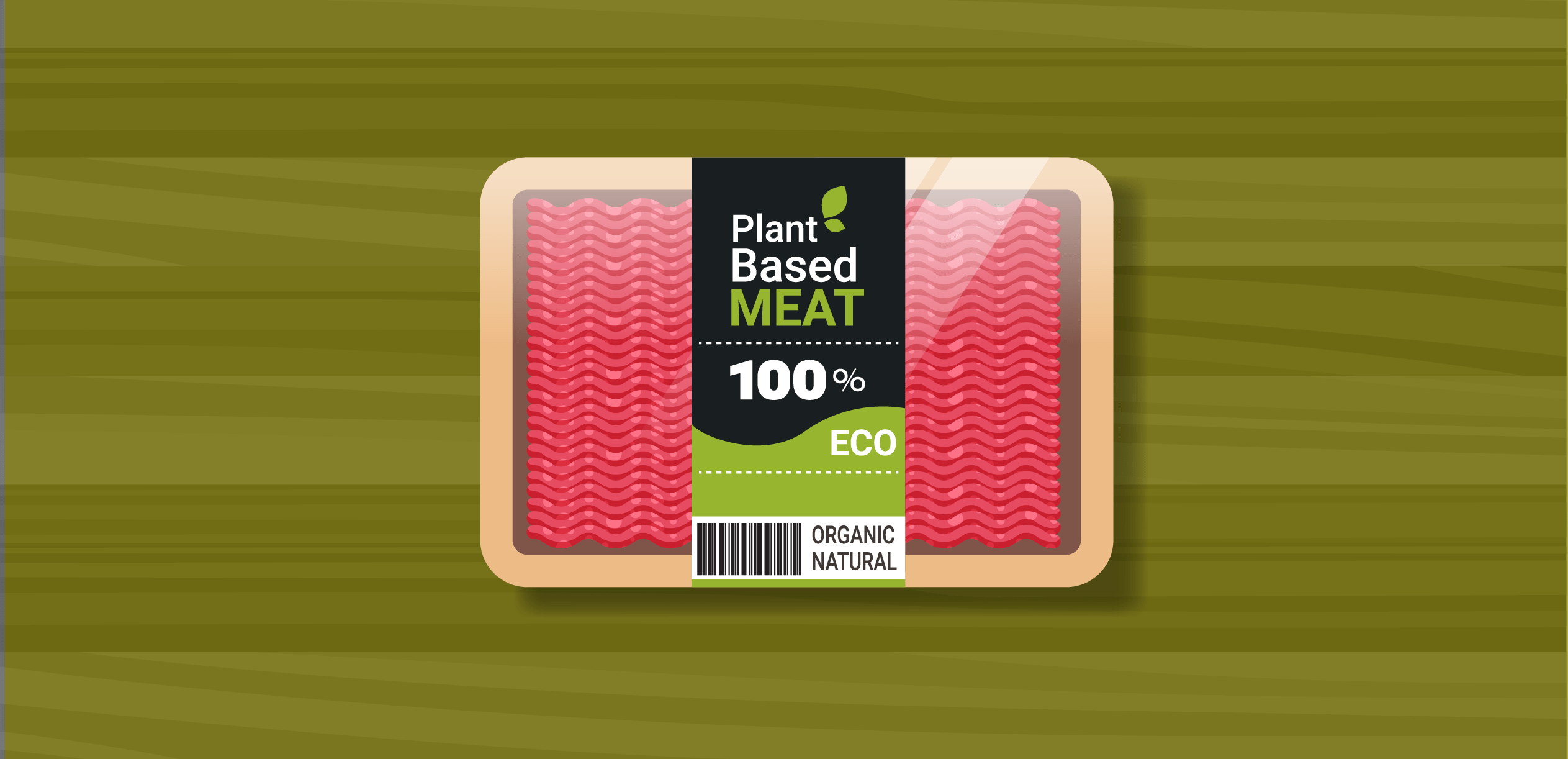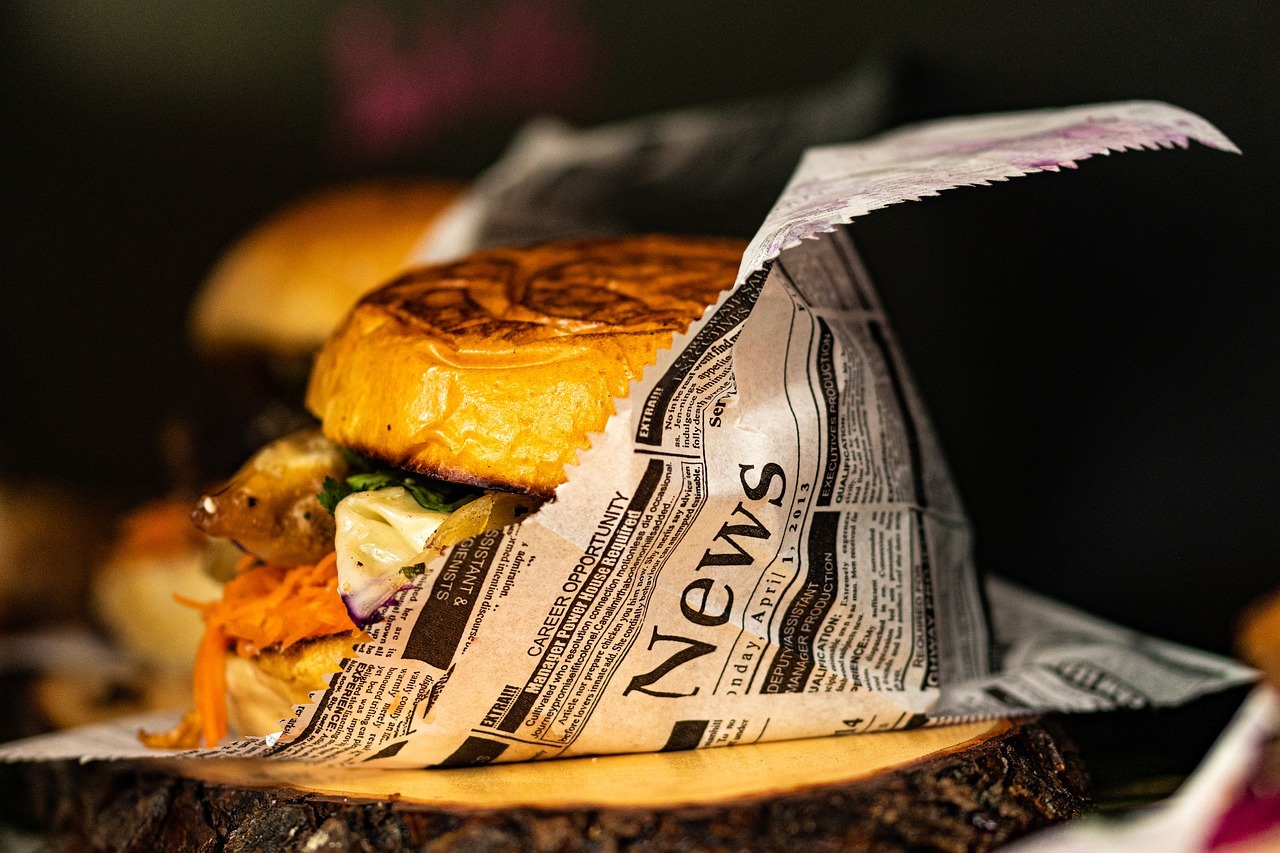Background
Australia’s plain packaging saga has a 10 year-long history starting with Australia’s announcement of mandatory plain packaging for tobacco products in 2010.[1] Thereafter, in 2011, Australia enacted the Tobacco Plain Packaging Act (TPP Act),[2] requiring plain packaging for tobacco products and prohibiting the use of logo, imagery, colours, text, borders, embellishment or embossment of any kind.[3] The Act only allows the packaging to have a “drab dark brown” colour, a brand name, a variant name for the tobacco product (if any) and an increase in the size of the pictorial health warning.[4]

Source: David Hammond.[5]
The object behind enacting the TPP Act was to improve public health by discouraging people from taking up smoking.[6] To achieve this, as per the Act, the plain packaging helps reduce the appeal of tobacco products, increases the space for health warnings on the products and reduces the ability of the packaging to mislead consumers about the harmful effects of smoking.[7]
In 2012, the constitutionality of the TPP Act came to be challenged before the High Court of Australia by four tobacco giants, namely British American Tobacco, Philip Morris, Imperial Tobacco and Japan Tobacco. They argued that the TPP Act removes their intellectual property rights in a manner that is contrary to the Australian Constitution, since the Constitution allows the acquisition of any property only on ‘just terms’.[8] However, the High Court of Australia upheld the constitutionality of the TPP Act. Thereafter, Philip Morris Asia brought a challenge under the 1993 bilateral investment treaty (BIT) between Australia and Hong-Kong. Philip Morris Asia claimed that the Australian Government had violated its obligations under the BIT by expropriating its intellectual property through the TPP Act.[9] Consequently, it claimed compensation for the loss suffered for complying with the Act. The Australian Government opposed this claim on two grounds: (a) the BIT does not confer jurisdiction on an arbitral tribunal to determine pre-existing disputes re-packaged as BIT claims; and (b) Philip Morris Asia invested in Philip Morris Australia ten months after the announcement for plain packaging was made and therefore, it was fully aware of the plain packaging measures being adopted by Australia.[10] Finally in 2015, dismissing the claim brought by Philip Morris Asia, the Arbitral Tribunal agreed with the arguments of the Australian Government and concluded that the main purpose of Philip Morris Asia’s investment in Philip Morris Australia was to bring a dispute under the BIT.[11]
Meanwhile, at the World Trade Organisation (WTO), Ukraine, Cuba, Indonesia, Honduras and Dominican Republic (hereafter, the Complainants) filed complaints against Australia’s tobacco plain packaging measures (TPP measures).
WTO dispute against Australia: Panel Report and Appellate Body’s decision
Before the WTO Panel, two important arguments were raised concerning the TBT Agreement and the TRIPS Agreement, both of which were dismissed by the Panel. Thereafter, Honduras and Dominican Republic (hereafter, the Appellants) appealed the decision of the WTO Panel (Panel Report) before the Appellate Body, which upheld the Panel’s findings. We examine these two issues below:
Violation of article 2.2 of the Technical Barriers to Trade (TBT) Agreement
Before the Panel, the Complainants argued that Australia’s TPP measures violated Article 2.2 of the TBT Agreement. Article 2.2 states that “Members shall ensure that technical regulations are not prepared, adopted or applied with a view to or with the effect of creating unnecessary obstacles to international trade. For this purpose, technical regulations shall not be more trade-restrictive than necessary to fulfil a legitimate objective, taking account of the risks non-fulfilment would create. Such legitimate objectives are, inter alia: national security requirements; the prevention of deceptive practices; protection of human health or safety, animal or plant life or health, or the environment…” The Complainants argued that: (a) the TPP measures were more trade restrictive than necessary to achieve the objective of public health since: (i) they have a limiting effect on international trade due to a modification in the conditions of competition between producers of tobacco products; and (ii) they result in a decline in the volume and value of trade in tobacco products; and (b) there were less trade-restrictive alternatives compared to the TPP measures such as increasing the minimum legal purchasing age (MPLA) and increased taxation of tobacco products. These arguments were dismissed by the Panel. Before the Appellate Body, the Appellants argued that the Panel erred in its conclusion that the TPP measures were not in violation of Article 2.2 of the TBT Agreement.
With respect to trade restrictiveness: (i) the Appellate Body upheld the Panel’s finding that the non-discriminatory modification of conditions of competition for producers of tobacco products due to the TPP measures cannot be said to have a limiting effect on international trade.[12] In fact, according to the Appellate Body, such non-discriminatory modifications in conditions could even have a net positive effect on trade between Members and therefore, it cannot determine the trade restrictiveness of a measure; (ii) the Appellate Body also upheld the Panel’s finding that the Complainants failed to demonstrate that the TPP measures would lead to a decline in the value of trade in tobacco products. The Complainants had argued that a reduction in brand differentiation will lead to an increase in price competition and a fall in prices, leading to a decrease in the sales value of tobacco products.[13] However, the Panel found that the evidence suggested that the TPP measures led to an increase in the price of cigarettes, thereby offsetting the decrease in the quantity of cigarettes consumed and consequently, increasing the value in the market.[14] With respect to the decline in the volume of trade in tobacco products, the Panel agreed that the TPP measures are trade-restrictive as they reduce the use of tobacco products, thereby reducing the volume of imported tobacco products in the Australian market.[15] However, the Appellate Body upheld the Panels’ finding that Article 2.2 allows some trade-restrictiveness so far as it meets the legitimate objective. In this case, with the help of substantial evidence, the Panel found that the TPP measure achieved the legitimate objective of protecting public health by reducing the use of, and exposure to, tobacco products.[16]
With respect to less trade-restrictive alternative measures, the Appellate Body upheld the Panel’s finding that the Complainants failed to demonstrate that the increase in the MLPA and increase in taxation were less trade restrictive alternatives to the TPP measures that would make an equivalent contribution to Australia’s objective. In the Panel’s assessment of the increase in MPLA, it found that this alternative eliminates the ability of tobacco companies to sell their products to people under the age of 21 years and competitive opportunities associated with such sales.[17] Based on evidence, the Panel found that this would reduce the overall volume of imports of tobacco products commensurate with that of the TPP measures.[18] While it also reduces the overall value of imports, the evidence did not allow an assumption that the reduction in the value of imports would be less than what was observed with the TPP measures.[19] Regarding increase in taxation, the Panel found that this measure would have an equal impact on the overall consumption of tobacco products and is therefore as trade-restrictive as the TPP measures.[20] Therefore, the Panel concluded that both these alternative measures were not less trade-restrictive than the TPP measures. This was upheld by the Appellate Body.
Violation of article 20 of the Trade-Related Aspects of Intellectual Property Rights (TRIPS) Agreement
Before the Panel, the Complainants argued that Australia’s TPP measures were violative of Article 20 of the TRIPS Agreement. Article 20 states that “[T]he use of a trademark in the course of trade shall not be unjustifiably encumbered by special requirements, such as use with another trademark, use in a special form or use in a manner detrimental to its capability to distinguish the goods or services of one undertaking from those of other undertakings.” The Panel noted that the Complainants have the prima facie burden to show that the TPP measures were special requirements which ‘unjustifiably’ encumbered the use of trademarks in the course of trade. The Panel found that the Complainants failed to demonstrate this.
Before the Appellate Body, the Appellants claimed that the Panel erred in its interpretation that the TPP measures did not ‘unjustifiably’ encumber the use of a trademark. In reaching this conclusion, the Panel noted that the term ‘unjustifiable’ implies “a situation where the use of a trademark is encumbered by special requirements in a manner that lacks a justification or reason that is sufficient to support the resulting encumbrance.”[21] The Panel further stated that there may be good reasons that “sufficiently support the application of encumbrances on the use of a trademark in a reasonable manner.”[22] To determine this, the Panel considered Article 8 of the TRIPS Agreement which according to the Panel, provides guidance for interpreting the term ‘unjustifiably’ under Article 20. Article 8.1 states that “[M]embers may, in formulating or amending their laws and regulations, adopt measures necessary to protect public health ... provided that such measures are consistent with the provisions of this Agreement.” According to the Panel, this shows the intention of the drafters of the TRIPS Agreement “to preserve the ability for WTO Members to pursue certain legitimate societal interests” despite their impact on intellectual property rights.[23] Since public health has been specifically mentioned in Article 8.1, measures adopted for protecting public health can definitely be the basis for ‘justifiability’ of encumbrances under Article 20.[24] Therefore, the Panel concluded that the TPP measures for protecting public health is a justifiable reason for which the trademark has been encumbered by Australia. This reasoning was upheld by the Appellate Body.
In addition, in looking at the nature and extent of encumbrance resulting from the TPP measures, the Panel noted that the TPP measures only prohibit the use of trademarks such as logos, colours, fonts and other distinctive visual content, however, this is partly mitigated by the use of brand names on the packaging. However, the Panel found that the Complainants did not seek to demonstrate that the consumers have been unable to distinguish the commercial source of tobacco products of one undertaking from others as a result of the TPP measures.[25] Therefore, the Panel concluded that the Complainants did not demonstrate that Australia acted in violation of Article 20 in choosing a policy to protect public health. This conclusion was upheld by the Appellate Body.[26]
Reactions: public health versus intellectual property rights
The Panel Report and the Appellate Body’s decision has evoked an equal amount of praise and criticism from various quarters. While supporters of public health have hailed the decision, trademark associations and tobacco companies have been critical of the violation of trademark rights of tobacco companies. The WHO issued a press release hailing the decision as a landmark victory for global health. Whereas, the International Trademark Association issued a statement that it is extremely disappointed with the WTO’s ruling. The Panel’s interpretation of Article 20 has especially drawn criticism for being a factual assessment and leaving WTO Members with uncertainty as to what other reasons will justify an encumbrance to the use of trademarks.[27] While on this ground alone many trademark rights holders and scholars were hoping that the Panel Report will be reversed, its affirmation will come as a surprise to them.
A Boost to India’s plain packaging aspirations
After Australia enacted the TPP Act, twelve more countries adopted similar legislations over the years, including the United Kingdom, France, New Zealand, Norway, Ireland and Hungary, among others.[28] After the decision of the Panel Report in 2018, many other countries either enacted or tabled similar legislations.[29] In an atmosphere where plain packaging measures for protecting public health has gained a lot of traction, the Appellate Body’s decision will embolden many countries to adopt similar legislations. This is especially true for countries like India which has shown an inclination towards plain packaging of tobacco products, but has been on the back foot due to lobbying by tobacco giants.[30]
In India, a bill for plain packaging of tobacco products was introduced back in 2012 by a Member of Parliament Mr. Baijayant Panda, soon after Australia’s enactment of the TPP Act. The bill proposed plain packaging without the use of logos, colours and other information, and an increase in the size of the pictorial health warnings at the front and the back of the package to 60%.[31] However, no action has been taken on this bill till date. Thereafter, in 2014, the Allahabad High Court in a Writ Petition seeking plain packaging of tobacco products, urged the Central Government to “consider the feasibility of implementing the plain packaging of cigarettes and other tobacco products.”[32] In 2016, the Supreme Court of India, in a public interest litigation seeking plain packaging for tobacco products, issued notice to the Central Government to take further action. The Supreme Court stated that non-implementation of plain packaging is against India’s international obligations and global best practices.[33] However, no further action has been taken by the Central Government in this regard.
In referring to India’s international obligations, the Supreme Court was pointing to the World Health Organization’s (WHO) Framework Convention on Tobacco Control (FCTC), to which India became a party in 2003 and ratified it in 2004.[34] This Convention obligates parties to implement, within three years of ratifying the Convention, measures to undertake a comprehensive ban of all tobacco advertising, promotion and sponsorship.[35] To implement this, the guidelines under Article 13 of the WHO FCTC recommends that parties consider adopting “plain packaging requirements to eliminate the effects of advertising or promotion on packaging.”[36] This was cited extensively by Australia in adopting its plain packaging requirements, including in the TPP Act. Even the WTO Panel, in its report, cited these guidelines in the context of Article 20 to confirm that plain packaging of tobacco products was not ‘unjustifiable’.
Therefore, while litigation and investor-state dispute under any existing BIT is a legitimate fear for India, India now has many reasons to adopt plain packaging norms.
This piece has been authored by Kruthi Venkatesh, a consultant working with Ikigai Law, with inputs from Aman Taneja, Senior Associate at Ikigai Law.
For more on topic, please reach out to us at contact@ikigailaw.com.
[1] Liv Casben, Tobacco companies rally against plain packaging, 29th April, 2010, available at, https://www.abc.net.au/news/2010-04-29/tobacco-companies-rally-against-plain-packaging/414540 (last accessed on 27th June, 2020).
[2] Tobacco Plain Packaging Act, 2011, available at, https://www.legislation.gov.au/Details/C2011A00148 (hereafter, Tobacco Plain Packaging Act) (last accessed on 27th June, 2020).
[3] Id., at sec. 18.
[4] Id., at sec. 19.
[5] Kenneth Michael Cummings, Nothing Plain about Plain Packaging, Lung Cancer News, February, 2017, available at, https://www.lungcancernews.org/2017/02/01/nothing-plain-about-plain-packaging/ (last accessed on 27th June, 2020).
[6] Tobacco Plain Packaging Act, supra note 2, at sec. 3(1).
[7] Tobacco Plain Packaging Act, supra note 2, at sec. 3(2).
[8] The Library of Congress, Australia: Plain Packaging Law Upheld by High Court, 16th August, 2012, available at, https://www.loc.gov/law/foreign-news/article/australia-plain-packaging-law-upheld-by-high-court/ (last accessed on 27th June, 2020).
[9] World Health Organization, Investment tribunal dismisses Philip Morris Asia’s Challenge to Australia’s Plain Packaging, available at, https://untobaccocontrol.org/kh/legal-challenges/investment-tribunal-dismisses-philip-morris-asias-challenge-australias-plain-packaging/ (hereafter, World Health Organization, Investment tribunal dismisses Philip Morris Asia’s Challenge to Australia’s Plain Packaging) (last accessed on 27th June, 2020).
[10] Philip Morris Asia Limited and The Commonwealth of Australia, Australia’s Response to the Notice of Arbitration, at para. 7 (21st Dec., 2011), available at, https://www.ag.gov.au/sites/default/files/2020-03/Australias%20Response%20to%20the%20Notice%20of%20Arbitration%2021%20December%202011.pdf (last accessed on 27th June, 2020).
[11] World Health Organization, Investment tribunal dismisses Philip Morris Asia’s Challenge to Australia’s Plain Packaging, supra note 9.
[12] Appellate Body Report, Australia — Certain Measures Concerning Trademarks, Geographical Indications and Other Plain Packaging Requirements Applicable to Tobacco Products and Packaging, WT/DS435/AB/R and WT/DS441/AB/R, para 6.389 (9th June, 2020) (hereafter, Appellate Body Report, Australia — Tobacco Plain Packaging).
[13] Panel Report, Australia — Certain
Measures Concerning Trademarks, Geographical Indications and Other Plain
Packaging Requirements Applicable to Tobacco Products and Packaging,
WT/DS435/R
; WT/DS441/R ; WT/DS458/R ; and WT/DS467/R, para 7.1209 (28th June,
2018) (hereafter, Panel Report, Australia — Tobacco Plain Packaging).
[14] Panel Report, Australia — Tobacco Plain Packaging, supra note 13, at para 7.1218.
[15] Panel Report, Australia — Tobacco Plain Packaging, supra note 13, at para 7.1208.
[16] Panel Report, Australia — Tobacco Plain Packaging, supra note 13, at para 7.1310.
[17] Panel Report, Australia — Tobacco Plain Packaging, supra note 13, at para 7.1414.
[18] Panel Report, Australia — Tobacco Plain Packaging, supra note 13, at para 7.1414.
[19] Panel Report, Australia — Tobacco Plain Packaging, supra note 13, at para 7.1416.
[20] Panel Report, Australia — Tobacco Plain Packaging, supra note 13, at para 7.1492.
[21] Panel Report, Australia — Tobacco Plain Packaging, supra note 13, at para 7.2395.
[22] Panel Report, Australia — Tobacco Plain Packaging, supra note 13, at para 7.2396.
[23] Panel Report, Australia — Tobacco Plain Packaging, supra note 13, at para 7.2404.
[24] Panel Report, Australia — Tobacco Plain Packaging, supra note 13, at para 7.2406.
[25] Panel Report, Australia — Tobacco Plain Packaging, supra note 13, at para 7.2569-7.2570.
[26] Appellate Body Report, Australia — Tobacco Plain Packaging, supra note 12, para 7.111-7.113.
[27] Tanya Voon, India Views: WTO Panel n Australia’s Tobacco Plain Packaging: A Fact Dependent Analysis of TRIPS Art 20, Intellectual Property Watch (3rd July, 2018), available at, https://www.ip-watch.org/2018/07/03/wto-panel-australias-tobacco-plain-packaging-fact-dependent-analysis-trips-art-20/ (last accessed on 27th June, 2020).
[28] World Health Organization, Tobacco Plain Packaging: Global Status Update, WHO/NMH/PND/NAC/18.9, at 4 (2018), available at, https://apps.who.int/iris/bitstream/handle/10665/275277/WHO-NMH-PND-NAC-18.9-eng.pdf?ua=1 (last accessed on 27th June, 2020).
[29] Id., at 4.
[30] Jayna Kothari, What’s in a Pack? Sickness, Death and the Power of a Lethal Lobby, The Wire, 31st May, 2016. Available at, https://thewire.in/health/whats-in-a-pack-sickness-death-and-the-power-of-a-lethal-lobby (last accessed on 27th June, 2020).
[31] Plain Packaging can Reduce Use of Tobacco Products, The Hindu, 11th December, 2012, available at, https://webcache.googleusercontent.com/search?q=cache:xSlNhiDqm58J:https://www.thehindu.com/news/cities/Delhi/plain-packaging-can-reduce-use-of-tobacco-products/article4187369.ece+&cd=10&hl=en&ct=clnk&gl=in (last accessed on 27th June, 2020).
[32] Love Care Foundation v. Union of India, W.P. No. 1078 (M/B) of 2013, available at, https://www.tobaccocontrollaws.org/files/live/litigation/1853/IN_Love%20Care%20Foundation%20v.%20Union%20.pdf (last accessed on 27th June, 2020).
[33] SC Notice on PIL for Larger Pictorial Warning on Tobacco Products, Firstpost, 9th March, 2016, available at, https://www.firstpost.com/living/sc-notice-on-pil-for-larger-pictorial-warning-on-tobacco-products-2665652.html (last accessed on 27th June, 2020).
[34] United Nations Treaty Collection, WHO Framework Convention on Tobacco Control, Status of Treaties, available at, https://treaties.un.org/pages/ViewDetails.aspx?src=TREATY&mtdsg_no=IX-4&chapter=9&clang=_en (last accessed on 27th June, 2020).
[35] World Health Organization Framework Convention on Tobacco Control, art. 13.
[36] World Health Organization Framework Convention on Tobacco Control, Guidelines for implementation of Article 13 of the WHO Framework Convention on Tobacco Control, at para 16-17, available at, https://www.who.int/fctc/guidelines/article_13.pdf?ua=1#:~:text=As%20for%20all%20aspects%20of,%2C%20airplanes%2C%20ports%20and%20airports.&text=Display%20and%20visibility%20of%20tobacco,and%20should%20therefore%20be%20banned. (last accessed on 27th June, 2020).









